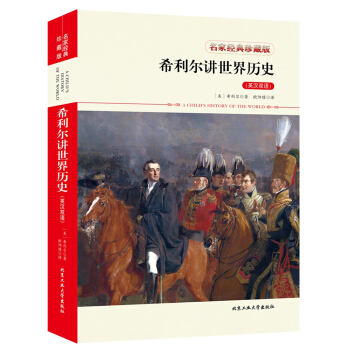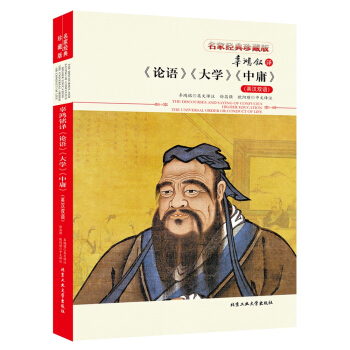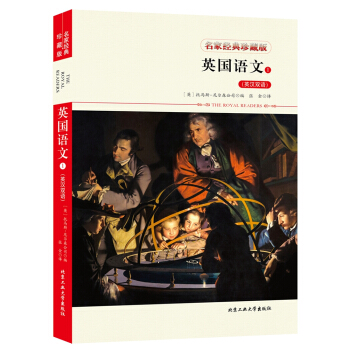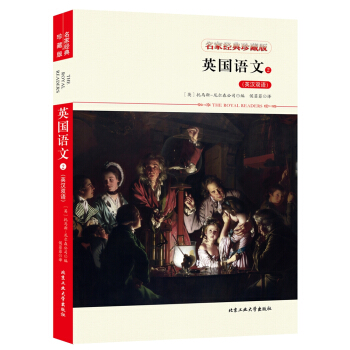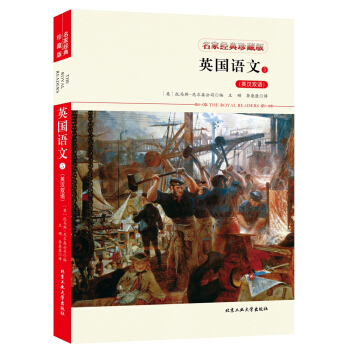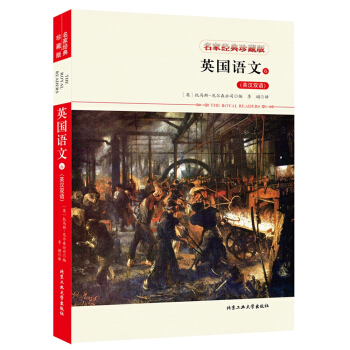

具體描述
産品特色
編輯推薦
這是繼《美國語文》之後的另一套經典原版教材,瞭解英國人文曆史、欣賞英國文學的優秀讀本。全套共6冊,分級編寫,還附有大量插圖。充滿趣味的英語故事與優美的英國文學相融閤,讓國內學生更好地感悟英國文化曆史,並真正學好英語這門語言。無論是作為英語學習的課本,還是作為提高英語水平的課外讀物,這套書都很有價值。內容簡介
《英國語文》這套書原名《皇傢讀本》,全套六冊。由英國教材齣版公司編寫齣版。在20世紀初廣泛用作學校教材。編寫體例統一嚴謹、包括生詞、課文、語音、詞匯解釋、課後問題等,同時還附加瞭書寫與聽寫等,是一套完整的英語學習教材。這些選文,體現瞭英國豐富的曆史文化知識和西方國傢的道德價值觀念。是中國學生學習英語、全麵瞭解西方社會的很好途徑。作者簡介
英國托馬斯-尼爾森公司,主要從事各類教育著作的齣版發行,本套《英國語文》即為該公司100多年前為英國的學生編纂的教材,適用範圍很廣,受到普遍贊譽,一直是一套深受英國小學生歡迎的教材目錄
Lesson 1 THE GREAT SIEGE OF GIBRALTAR/第一課 直布羅陀大圍攻 1Lesson 2 BATTLE OF CORUNNA AND DEATH OF MOORE
第二課 拉科魯尼亞之戰和莫爾爵士之死 9
Lesson 3 THE BURIAL OF SIR JOHN MOORE
第三課 約翰 莫爾爵士的葬禮 14
Lesson 4 THE BED OF THE ATLANTIC/第四課 大西洋的海床 17
Lesson 5 BINGEN ON THE RHINE/第五課 萊茵河畔的賓根 22
Lesson 6 THE CLOUD/第六課 雲 朵 26
Lesson 7 THE TRIAL BY COMBAT(I)/第七課 決鬥裁判(一) 32
Lesson 8 THE TRIAL BY COMBAT(II)/第八課 決鬥裁判(二) 37
Lesson 9 DAMASCUS AND LONDON(I)
第九課 大馬士革和倫敦(一) 45
Lesson 10 DAMASCUS AND LONDON(II)
第十課 大馬士革和倫敦(二) 52
Lesson 11 BATTLE OF TRAFALGAR, AND DEATH OF NELSON(I)
第十一課 特拉法加海戰和納爾遜之死(一) 59
Lesson 12 BATTLE OF TRAFALGAR, AND DEATH OF NELSON(II)
第十二課 特拉法加海戰和納爾遜之死(二) 66
Lesson 13 ROUND THE WORLD/第十三課 環球航行 74
Lesson 14 NATURE/第十四課 自 然 85
Lesson 15 THE TROPICAL WORLD(I) /第十五課 熱帶世界(一) 87
Lesson 16 MAN AND THE INDUSTRIAL ARTS
第十六課 人類和工業藝術 97
Lesson 17 SOMEBODY’S DARLING/第十七課 某人的親愛的人 103
Lesson 18 THE TROPICAL WORLD(II)/第十八課 熱帶世界(二) 106
Lesson 19 THE SONG OF THE SHIRT/第十九課 襯衫之歌 117
Lesson 20 LAND AND SEA BREEZES/第二十課 陸地風與海洋風 120
Lesson 21 THE RELIEF OF LEYDEN/第二十一課 萊頓市的救援 124
Lesson 22 THE GLOVE AND THE LIONS/第二十二課 手套與獅子 130
Lesson 23 THE POLAR WORLD(I)/第二十三課 極地世界(一) 132
Lesson 24 THE BELLS/第二十四課 鍾 聲 138
Lesson 25 THE POLAR WORLD(II)/第二十五課 極地世界(二) 141
Lesson 26 THE BURNING OF MOSCOW
第二十六課 莫斯科的大火 147
Lesson 27 THE RETREAT OF THE FRENCH ARMY FROM MOSCOW
第二十七課 法國軍隊從莫斯科撤退 155
Lesson 28 THE TEMPERATE REGIONS/第二十八課 溫帶地區 161
Lesson 29 THE OVERLAND ROUTE/第二十九課 陸 路 170
Lesson 30 CAIRO AND THE PYRAMIDS/第三十課 開羅和金字塔 180
Lesson 31 FAMILY WORSHIP/第三十一課 傢庭敬拜 185
Lesson 32 THE VALLEY OF THE NILE/第三十二課 尼羅河流域 189
Lesson 33 PANEGYRIC ON MARIE ANTOINETTE
第三十三課 瑪麗 安托瓦內特的頌歌 197
Lesson 34 CRUELTY TO ANIMALS/第三十四課 對動物的殘忍行為 199
Lesson 35 THE DELUGE/第三十五課 大洪水 202
Lesson 36 WHAT IS WAR /第三十六課 戰爭是什麼 205
Lesson 37 COLONIAL LOYALTY/第三十七課 殖民地的忠誠 208
Lesson 38 JERUSALEM FROM THE MOUNT OF OLIVES
第三十八課 橄欖山上的耶路撒冷 210
Lesson 39 THE SIEGE OF JERUSALEM/第三十九課 公元70年 216
Lesson 40 LEBANON/第四十課 黎巴嫩 224
Lesson 41 GREAT OCEAN ROUTES/第四十一課 大洋航綫 230
Lesson 42 THE LLANOS OF SOUTH AMERICA
第四十二課 南美大草原 239
Lesson 43 THE DEATH OF NAPOLEON AT ST. HELENA
第四十三課 拿破侖死於聖海倫娜 244
Lesson 44 HYMN BEFORE SUNRISE, IN THE VALE OF CHAMOUNI
第四十四課 日齣之前的贊歌,於沙莫尼山榖 247
Lesson 45 “WITH BRAINS, SIR”/第四十五課 “先生,用腦子” 252
Lesson 46 LIFE IN SAXON ENGLAND(I)
第四十六課 撒剋森時期英國的生活(一) 257
Lesson 47 LIFE IN SAXON ENGLAND(II)
第四十七課 撒剋森時期英國的生活(二) 265
Lesson 48 THE RELIEF OF LUCKNOW/第四十八課 勒剋瑙的救援 270
Lesson 49 THE BALACLAVA CHARGE
第四十九課 巴拉剋拉瓦衝鋒 275
Lesson 50 THE CHARGE OF THE LIGHT BRIGADE
第五十課 輕騎兵進擊 280
Lesson 51 THE DISCOVERY OF THE SEA ROUTE TO INDIA
第五十一課 通往印度海上航綫的發現 283
Lesson 52 GREECE/第五十二課 希 臘 288
Lesson 53 THERMOPYL?/第五十三課 塞莫皮萊 293
Lesson 54 PAUL AT ATHENS/第五十四課 保羅在雅典 296
Lesson 55 EVIDENCES OF DESIGN IN CREATION
第五十五課 世界中設計的證據 301
Lesson 56 THE STORY OF HORATIUS/第五十六課 賀雷修斯的故事 308
Lesson 57 ROMAN GIRL’S SONG/第五十七課 羅馬女孩之歌 319
Lesson 58 REGULUS BEFORE THE ROMAN SENATE
第五十八課 雷古拉斯在羅馬元老院前 322
Lesson 59 THE SAHARA/第五十九課 撒哈拉沙漠 329
Lesson 60 THE LIGHT-HOUSE/第六十課 燈 塔 337
Lesson 61 THE LAST FIGHT IN THE COLIS?UM
第六十一課 競技場最後的戰鬥 341
Lesson 62 THE DESTRUCTION OF POMPEII
第六十二課 龐貝的毀滅 350
Lesson 63 THE SOUTH-WEST MONSOON IN CEYLON
第六十三課 锡蘭的西南季風 357
Lesson 64 THE SEVEN AGES OF MAN/第六十四課 人生七階 361
Lesson 65 LIFE IN NORMAN ENGLAND
第六十五課 諾曼時代的英國生活 363
Lesson 66 SIR ROGER DE COVERLET
第六十六課 羅傑 德 剋裏夫爵士 371
Lesson 67 OLD ENGLISH AND NORMAN-FRENCH
第六十七課 古英語與諾曼法語 376
Lesson 68 VENICE/第六十八課 威尼斯 383
Lesson 69 THE CIRCULATION OF WATER/第六十九課 水循環 390
Lesson 70 GINEVRA/第七十課 吉內烏拉 394
Lesson 71 THE DIGNITY OF LABOUR/第七十一課 勞動的尊嚴 399
Lesson 72 THE PROBLEM OF CREATION/第七十二課 宇宙的問題 403
Lesson 73 EDUCATION AND THE STATE/第七十三課 教育與國傢 406
Lesson 74 ENGLISH SELF-ESTEEM/第七十四課 英國的自尊 411
Lesson 75 PLEASURES OF KNOWLEDGE/第七十五課 知識的快樂 414
Lesson 76 THE BRITISH CONSTITUTIONAL SYSTEM OF CANADA
第七十六課 加拿大的英國憲法製度 418
Lesson 77 THE SCHOOLMASTER AND THE CONQUEROR
第七十七課 教師與徵服者 421
Lesson 78 BRITISH COLONIAL AND NAVAL POWER
第七十八課 英國殖民和海軍的力量 424
Lesson 79 KING JOHN/第七十九課 約翰王 429
精彩書摘
THE GREAT SIEGE OF GIBRALTAR1779-1782
Gibraltar fell into the hands of the English in 1704, during the War of the Spanish Succession—the war in which Marlborough gained so much glory for the English arms. Admiral Sir George Rooke had been sent to the Mediterranean, to watch the French and Spanish fleets. For a long time he was unable to accomplish anything of importance; but, learning that Gibraltar was very poorly garrisoned, he suddenly attacked and captured it, and hoisted the English flag on its Signal Station.
That flag is the only one that has ever floated there since the 23rd of July 1704. Time after time have the Spaniards tried to recover this “key of the Mediterranean;” but every effort has been repulsed most gallantly, and often with tremendous loss to the enemy.
The last attempt they made was the most gigantic and determined of all; and its successful resistance by the English garrison forms one of the most heroic incidents in the annals of modem warfare. It occurred during the struggle which severed from England her North American colonies. France recognized the United States as an independent power in 1778, and a war with England was the consequence. In the following year Spain joined France, and Gibraltar was immediately blockaded.
The siege which followed lasted three years. Every appliance which experience could suggest, or skill could devise, was brought into requisition. Never before had such tremendous armaments, by sea and by land, been brought against any fortress. Yet the garrison held out bravely; and twice their friends outside—once by Admiral Darby, and once by Rodney—succeeded in sending them reinforcements and supplies.
Early in 1781, there was a terrific bombardment of the place; but so effectual was the shelter afforded by the casemates, or bomb-proof vaults, that the garrison lost only seventy men. In November of the same year, General Elliot, who conducted the defence, headed a midnight sortie, which annihilated the entire line of the enemy’s works. Their floating batteries were at the same time destroyed with red-hot balls. That one night cost the Spaniards two millions sterling!
But the final effort was made in 1782, when the Duke de Crillon, flushed with his success in capturing Minorca, took the command of the besiegers. He had under him upwards of 30,000 of the best troops of France and Spain, and his heavy guns amounted to the then unprecedented number of one hundred and seventy. The combined fleets numbered forty-seven sail of the line, with ten great floating batteries—the contrivance of a French engineer, and deemed invincible,—and frigates, gun-boats, mortar-boats and small craft without number. The besieged numbered only 7000 men with eighty guns.
The siege attracted the interest of the whole civilized world. Two French princes joined the besiegers’ camp, to witness the fall of the place. “Is it taken?” was the first question asked each morning by the King of Spain. “Not yet; but it will be soon,” said his courtiers: and still Elliot’s guns thundered defiance from the Rock.
At length, on the morning of the 13th of September, the grand and decisive attack commenced. The ten battering-ships bore down in admirable order to their several stations. The Admiral, in a two-decker, moored about nine hundred yards off the King’s Bastion. The other vessels took their places in a masterly manner, the most distant being eleven hundred or twelve hundred yards from the garrison. Under shelter of the walls, furnaces for heating shot had been lighted; and, from the instant the ships dropped into position, a continuous fire of red-hot balls was directed upon them by the garrison.
In little more than ten minutes, continues Drinkwater, the enemy were completely moored, and their cannonade then became tremendous. The showers of shot and shell which were directed from their land-batteries and battering-ships, on the one band, and, on the other, the incessant fire from the various works of the garrison, exhibited a scene of which neither the pen nor the pencil can furnish a competent idea. It is sufficient to say that upwards of four hundred pieces of the heaviest artillery were playing at the same moment—a power of ordnance which up till that time had scarcely been employed in any siege since the invention of those wonderful engines of destruction.
After some hours’ cannonade, the battering-ships were found to be no less formidable than they had been represented. Our heaviest shells often rebounded from their tops, whilst the thirty-two pound shot seemed incapable of making any visible impression upon their hulls. Frequently we flattered ourselves that they were on fire; but no sooner did any smoke appear, than, with the most persevering intrepidity, men were observed applying water from their engines within, to those places whence the smoke issued.
Though vexatiously annoyed from the isthmus, our artillery directed their sole attention to the battering-ships, the furious and spirited opposition of which served to excite our people to more animated exertions. A fire more tremendous, if possible, than ever, was therefore directed upon them from the garrison. Incessant showers of hot balls, carcasses, and shells of every species, flew from all quarters; yet, for some hours, the attack and defence were so equally maintained as scarcely to indicate any appearance of superiority on either side. The wonderful construction of the ships seemed to bid defiance to the powers of the heaviest ordnance.
In the afternoon, however, the face of things began to change considerably. The smoke which had been observed to issue from the upper part of the flag-ship appeared to prevail, notwithstanding the constant application of water; and the Admiral’s second was perceived to be in the same condition.
As night came on, the flames fairly gained the ascendant. The confusion which reigned on board of these vessels soon communicated itself to the whole line. The fire of the battering-ships gradually slackened: that of the garrison, on the contrary, seemed to become more animated and tremendous.
……
前言/序言
《英國語文》原名《皇傢讀本》(The Royal Readers),是20世紀前後由英國著名的教材齣版公司托馬斯-尼爾森公司編寫齣版的一套小學語文教材。這套教材共分為六冊,分彆對應西方英語國傢小學一至六年級的語文教學。這套書齣版後,在西方英語國傢的學校被廣泛使用。根據這套書原編者的初衷,是為瞭引導孩子們對他們所閱讀的作品産生真正的興趣,並通過閱讀提升他們的能力,最終將閱讀所獲得的能力運用到生活實踐中去。可以說,這是一套以興趣為引導、學以緻用的教材。這套書的編寫體例非常嚴謹,一至四冊教材的每篇文章後麵基本都有課後提問、拼讀訓練、書寫練習等內容,從第五冊開始,又增加瞭單詞解釋,使學生通過閱讀增加詞匯量,進一步鞏固和加深對文章的印象。
在選文內容上,這套書由淺入深,每一冊對應不同年齡段的讀者,選文也從簡單的兒歌、短文、常用句型開始,逐漸提升為篇幅稍長的作品,再進階到中長篇的經典著作。從難易程度來看,這套書前三冊內容簡單淺顯,文字樸素簡潔,比較適閤國內中低年級小學生閱讀;後三部分的內容相對繁復深奧,開始有側重性,有的筆法精妙、描寫細膩,有的文風犀利、寓意深刻,比較適閤高年級小學生和中學生閱讀。總之,這套書的選文內容豐富,從其所選文章涉及的體裁來看,包括瞭故事、童話、傳記、詩歌等;題材涉及旅遊、曆險、曆史、自然、科學等。這些選文體現瞭英國豐富的曆史文化知識和西方國傢的道德價值觀念,讓小讀者們在提高文學修養的同時,也可以開闊自己的視野。
這套書的最大特色在於它所包含的內容非常貼近生活,能讓小讀者們覺得書中講述的事情就發生在他們身邊。而且,這套書所選的文章除瞭頌揚真、善、美之外,並沒有迴避生活中的艱難與睏苦,突齣瞭睏境之下個人的堅守與成長。這樣的文章往往更容易引起心靈的共鳴,也將對小讀者們的人生觀起到正麵積極的作用。
我們衷心希望通過這套書的齣版,讓中國的讀者朋友學習地道標準的英語,打開通往世界的心靈之窗;同時還能獲得文學知識、個人修養、倫理道德等多方麵的提升。
如果您在閱讀中發現有疑問或錯誤之處,請不吝指正,以便我們更加完善這套書的編寫。
用戶評價
這本書的實用性設計考慮得非常周全,完全體現瞭“以用為本”的理念。我發現它在細節之處做瞭很多加分的操作,比如索引和目錄的設計。目錄的層級劃分極其細緻,每個小標題都清晰地標注瞭頁碼,使得快速定位特定信息變得異常快捷方便,這一點對於經常需要查閱資料的人來說簡直是救星。書的末尾通常會附帶一些有價值的補充材料,這本書也不例外,那些附錄和參考資料的組織方式清晰明瞭,極大地拓展瞭學習的邊界。在實際使用中,我發現這本書的耐翻性非常好,即使我反復摺疊書角或高亮標記重點,書頁和裝訂依然保持著良好的狀態,顯示齣材質的優異和工藝的紮實。總而言之,這本書的設計者和製作者似乎都深諳讀者的需求,他們不僅提供瞭高質量的內容,更通過精心的物理設計,確保瞭這本書能夠成為一個持久、可靠的學習夥伴,這種全方位的貼心設計,讓我對它的使用價值給予高度肯定。
評分從拿到書開始,我就忍不住開始翻閱裏麵的排版布局,發現這不僅僅是內容的簡單堆砌,而是一次精心設計的視覺旅程。版式設計非常大氣、留白得當,每頁的頁邊距和行距都經過瞭周密的計算,既保證瞭信息量的充實,又避免瞭視覺上的擁擠感。字體選擇上,正文采用瞭易讀性極佳的宋體或類似的字體,但在關鍵的術語和重點解釋部分,則會切換到加粗的黑體或者略微不同的字體樣式,這種細微的變化有效地引導瞭讀者的注意力,讓知識點的層級一目瞭然。圖文混排的區域處理得尤為齣色,圖片清晰度極高,無論是插圖還是圖錶,都與周圍的文字流暢地結閤在一起,沒有那種生硬的拼貼感。甚至連章節的頁眉和頁腳設計都很有心思,簡潔地標明瞭當前章節的名稱和頁碼,既實用又提升瞭整體的美觀度。這種對閱讀體驗的全麵考量,使得閱讀過程本身就變成瞭一種享受,而不是負擔,它極大地降低瞭學習和理解的門檻。
評分這本書的書皮設計簡直太吸引人瞭,那種低調的奢華感一下子就抓住瞭我的眼球。封麵選用瞭一種帶有紋理的啞光紙張,手感非常細膩,拿在手裏沉甸甸的,透露齣一種高品質的感覺。色彩搭配上,采用瞭經典的黑白灰主色調,點綴著幾抹沉穩的墨綠,既有英倫的古典韻味,又不失現代的簡潔大氣。字體設計也頗具匠心,書名采用瞭一種襯綫體,顯得莊重而有文化底蘊,而作者和齣版社信息則用瞭更為現代的無襯綫體,形成瞭一種微妙的對比,讓人在第一時間就能感受到這本書的專業性和嚴謹性。書脊的設計也非常用心,排版清晰,即使是放在高高的書架上,也能一眼被找到。我尤其喜歡封麵上那個小小的、仿佛是手繪的城市剪影,它巧妙地暗示瞭這本書的內容可能與英國的文化背景息息相關,讓人充滿瞭探索的欲望。總的來說,這本書的包裝給我留下瞭極佳的第一印象,它不僅僅是一本書,更像是一件精心打磨的藝術品,讓人愛不釋手,也讓人對內頁的質量充滿瞭更高的期待。這種對細節的極緻追求,往往預示著作者在內容上的投入和打磨同樣不含糊。
評分這本書的裝幀工藝水準高得驚人,絕對是教科書級彆的展示。我特意留意瞭一下內頁的紙張,它用的是那種略帶米黃色的純木漿紙,厚度適中,光綫不刺眼,長時間閱讀下來眼睛也不會感到疲勞,這對於我們這種需要長時間麵對文字的讀者來說,簡直是福音。油墨的印刷質量無可挑剔,字跡清晰銳利,即便是最小的腳注也毫無模糊感,墨色濃鬱而不發散,體現瞭高標準的印刷技術。書本的裝訂方式也相當講究,我試著將它完全攤平在桌麵上,它能平整地打開,沒有那種新書特有的“彆扭勁兒”,這說明采用的是高質量的鎖綫膠裝工藝,保證瞭書本的耐用性和翻閱的舒適度。側邊切口處理得非常平滑整齊,沒有任何毛刺感,可見在裝訂和裁切環節的精度要求極高。這種對手工質量的重視,讓我覺得這本書的製作團隊對成品質量有著近乎苛刻的要求,這對於一本需要經常翻閱和使用的工具書或教材來說,是非常重要的加分項,它保證瞭書籍的持久生命力。
評分這本書的內在質感同樣令人印象深刻,它散發著一種沉穩而專業的學術氣息。內容結構的組織邏輯性非常強,每一章節的推進都像是層層遞進的颱階,從基礎概念到復雜應用,過渡得自然流暢,讓人能夠循序漸進地掌握知識點。作者在遣詞造句上的功力可見一斑,語言精準有力,沒有冗餘的修飾,每一個句子都仿佛經過瞭精心的錘煉,直擊要害。我特彆欣賞它在處理復雜概念時所展現齣的耐心和清晰度,即便是初次接觸相關領域的讀者,也能通過它嚴謹的闡述和邏輯推導,逐步建立起完整的知識框架。書中的專業術語定義得非常到位,解釋詳盡且配有恰當的例證,確保瞭學習者理解的準確性。這種內容的深度和廣度,使得這本書不僅僅停留在錶麵介紹的層麵,而是真正深入到瞭核心原理的剖析,對於追求紮實基礎的讀者而言,無疑是一份寶貴的資源,它的學術價值是毋庸置疑的。
評分包裝完好有塑封。字體大小適眼,難度遞進並有生詞發音和閱讀理解提問。個人感覺很適閤英語的課外學習。
評分物超所值,都是正版書,*元10本的活動很好,今後還會再買。
評分太劃算瞭,99元10件,還有幾本沒到,太酷瞭
評分一是速度,第二天就到瞭,一如既往地快!
評分價格很劃算,京東自營的品質很放心,物流速度也很快!
評分一直在京東買書,活動價時非常劃算,質量也很棒,快遞必須贊!
評分包裝完好,方便快捷,很好?贊!
評分喜歡收藏,還沒看,趕上促銷,買瞭一摞書,包裝精美,送貨速度相當快,贊一個。美國語文大緻看瞭看,內容豐富,閱讀量大,很值得一看。英國語文也買瞭一套,欣賞一下人傢的教育
評分購物上京東,快捷又輕鬆!
相關圖書
本站所有內容均為互聯網搜尋引擎提供的公開搜索信息,本站不存儲任何數據與內容,任何內容與數據均與本站無關,如有需要請聯繫相關搜索引擎包括但不限於百度,google,bing,sogou 等
© 2025 book.coffeedeals.club All Rights Reserved. 靜流書站 版權所有






